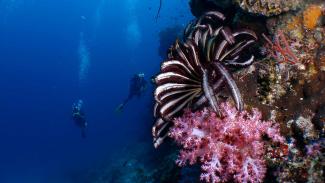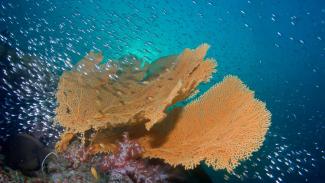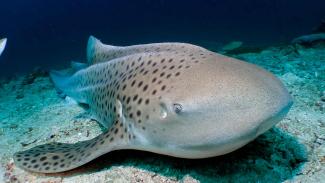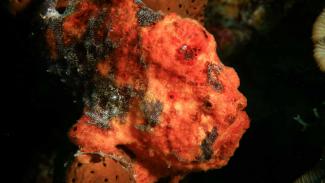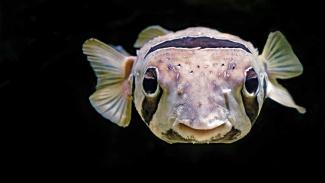Although Lionfish and Scorpionfish may appear very different at first glance, they are actually very closely related.
Both are predators equipped with toxic venom in their dorsal spines, both have a similar body shape and their features are not dissimilar.
Scorpionfish sit perfectly camouflaged on the reef waiting for prey to swim past while their flamboyant.long-finned cousins the Lionfish hover over the reef, boldly displaying their elegant plumes.
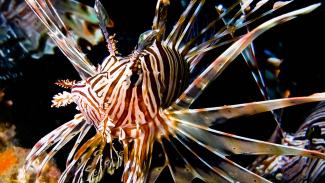
Luckily this highly poisonous fish only uses its lethal weapon in self-defence, so you are unlikely to get stung unless you sit or stand on one.
Family variety
Behaviour
Lionfish are often found under overhangs and tucked in holes while resting. They often hover gracefully above the reef when hunting, displaying their beautiful fins to their full extent.
Reproduction
Diet
Defences
FACTFILE
SPECIES: 222
SIZE RANGE: 5-50 cm
DISTRIBUTION:
Global. Widespread throughout region.
HABITAT:
Members of this family are mostly reef dwellers.
THREATS:
Many species are highly prized in the aquarium trade. It is impossible to breed them in captivity so all individuals are captured from the wild.
Identification tips
-
Scorpionfish and lionfish are relatively large, tassled heads with big protruding eyes and large, expandable mouths.
-
Rounded chunky bodies, flattened on the underside.
-
Lionfish in particular have prominent spines tipped with a poisonous toxin.
-
Pectoral fins of some species of Scorpionfish are brightly coloured to warn of their toxicity.
-
Scorpionfish are often covered in tassels or warts to add to their camouflage.
-
Some Scorpionfish use their pectoral fins in a modified walking movement to get around.
Popular species
Here are some of the Scorpionfish and Lionfish species you might come across on your next dive.
Common Lionfish
(Pterois volatans)
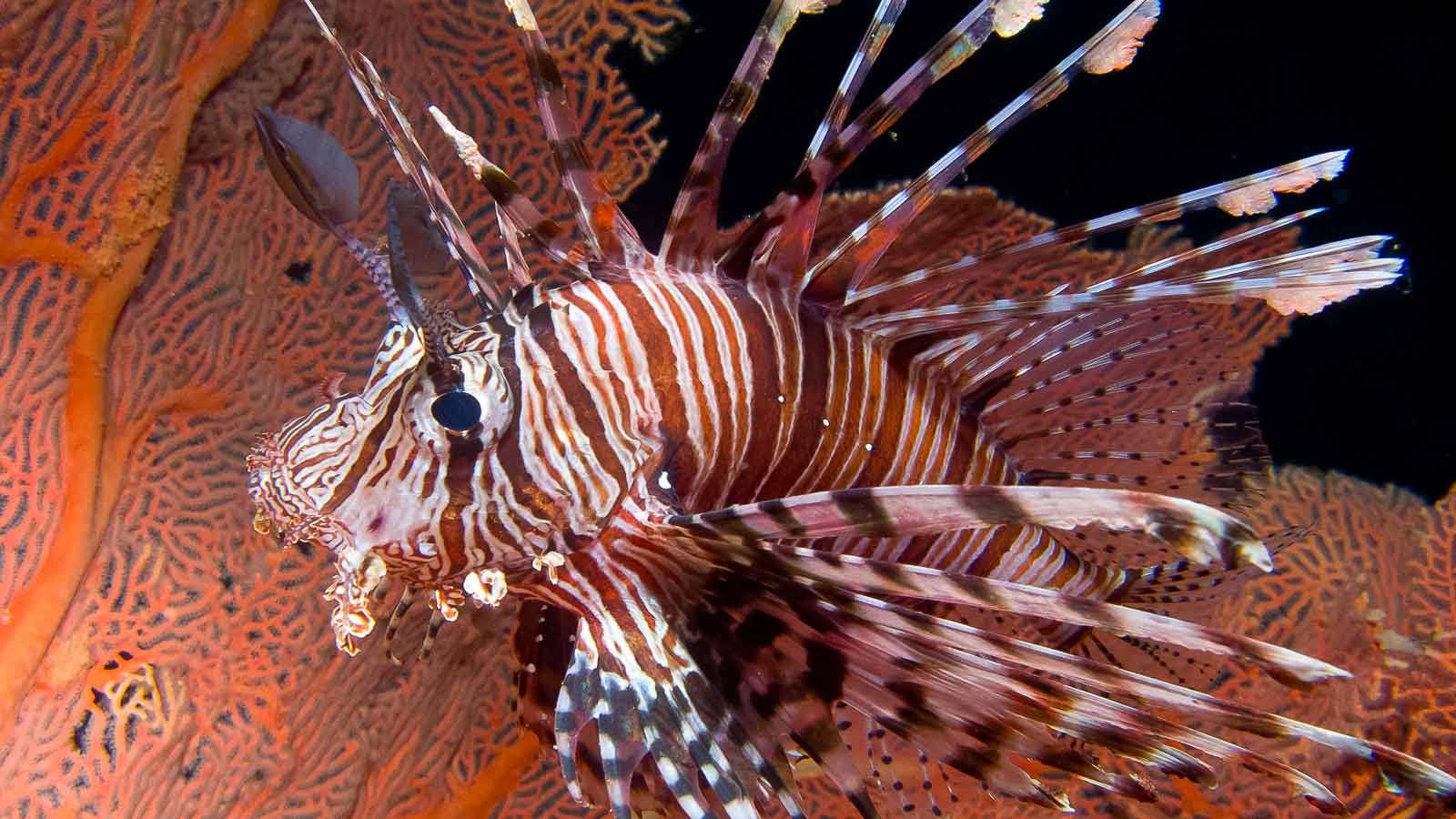
A larger lionfish, growing up to 40cm in length. Often seen hovering above the reef stalking prey. These lionfish can be very aggressive over their hunting territory. Juveniles are quite dark with almost translucent fins that bend in the current.
Bearded Scorpionfish
(Scorpaenopsis oxycephala)
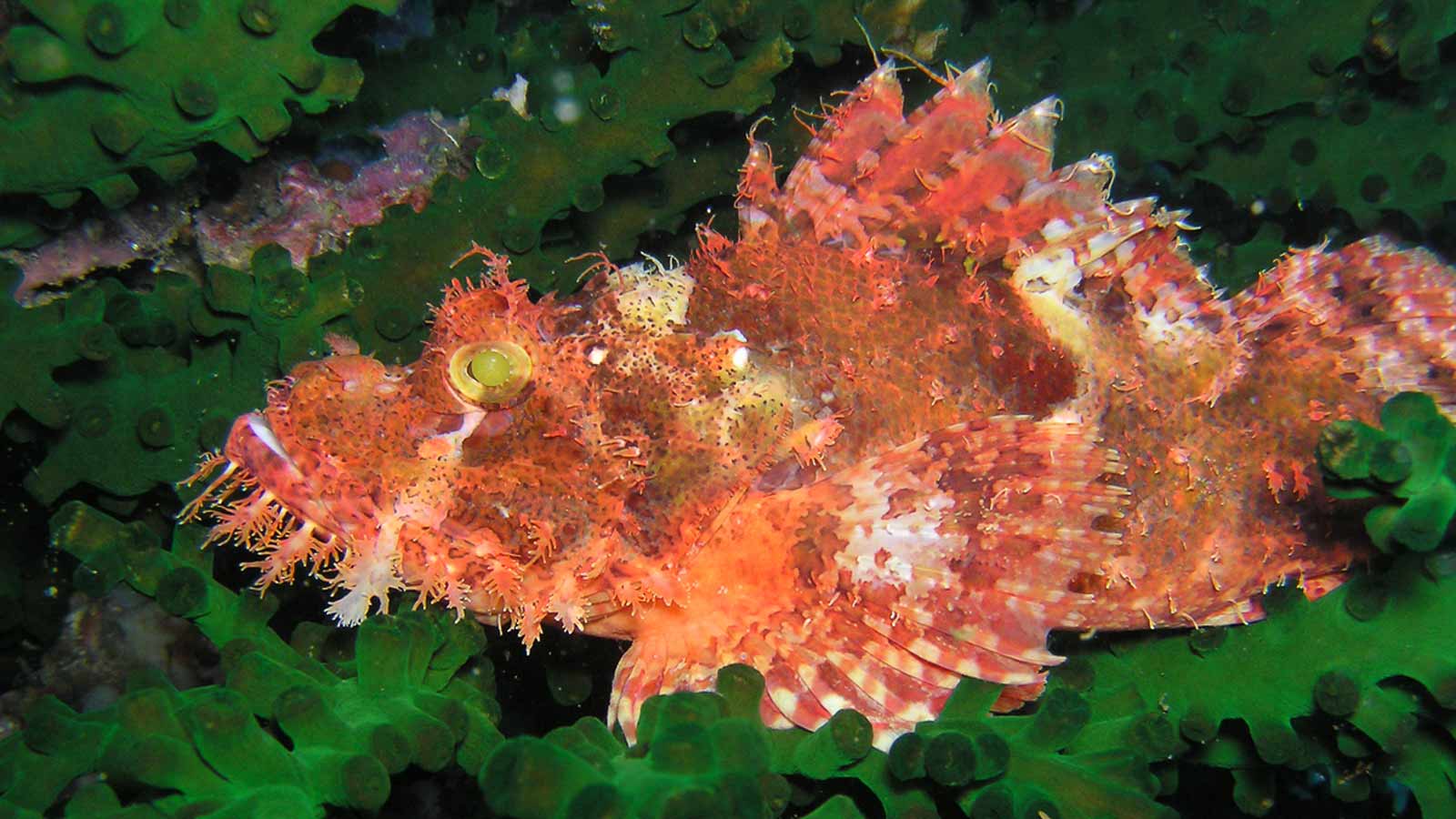
A very variable species whose colour can range from pale grey or white to dark red. Adults can measure up to 36cm. Completely covered in tassels, these fish blend into their backgrounds perfectly and are usually found lying hidden on the reef or sea bottom waiting for suitable prey. Can be locally common.
Lacy Scorpionfish
(Rhinopias aphanes)
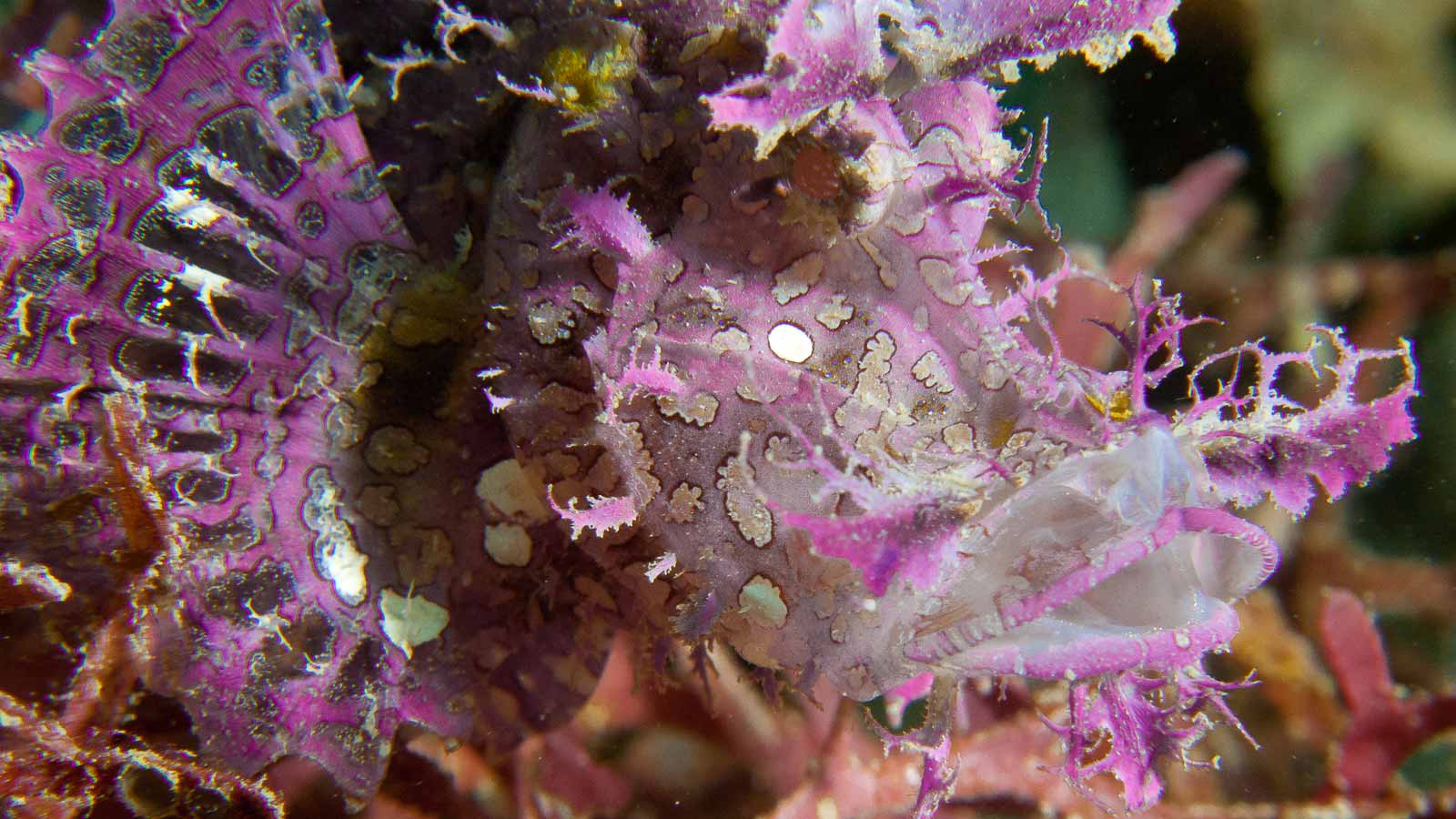
This amazingly camouflaged fish can be plain or covered in dark outlined spots. Variable shades from lilac, to yellow and red. Like the Weedy Scorpionfish, he is much sought after by divers, especially underwater photographers.



